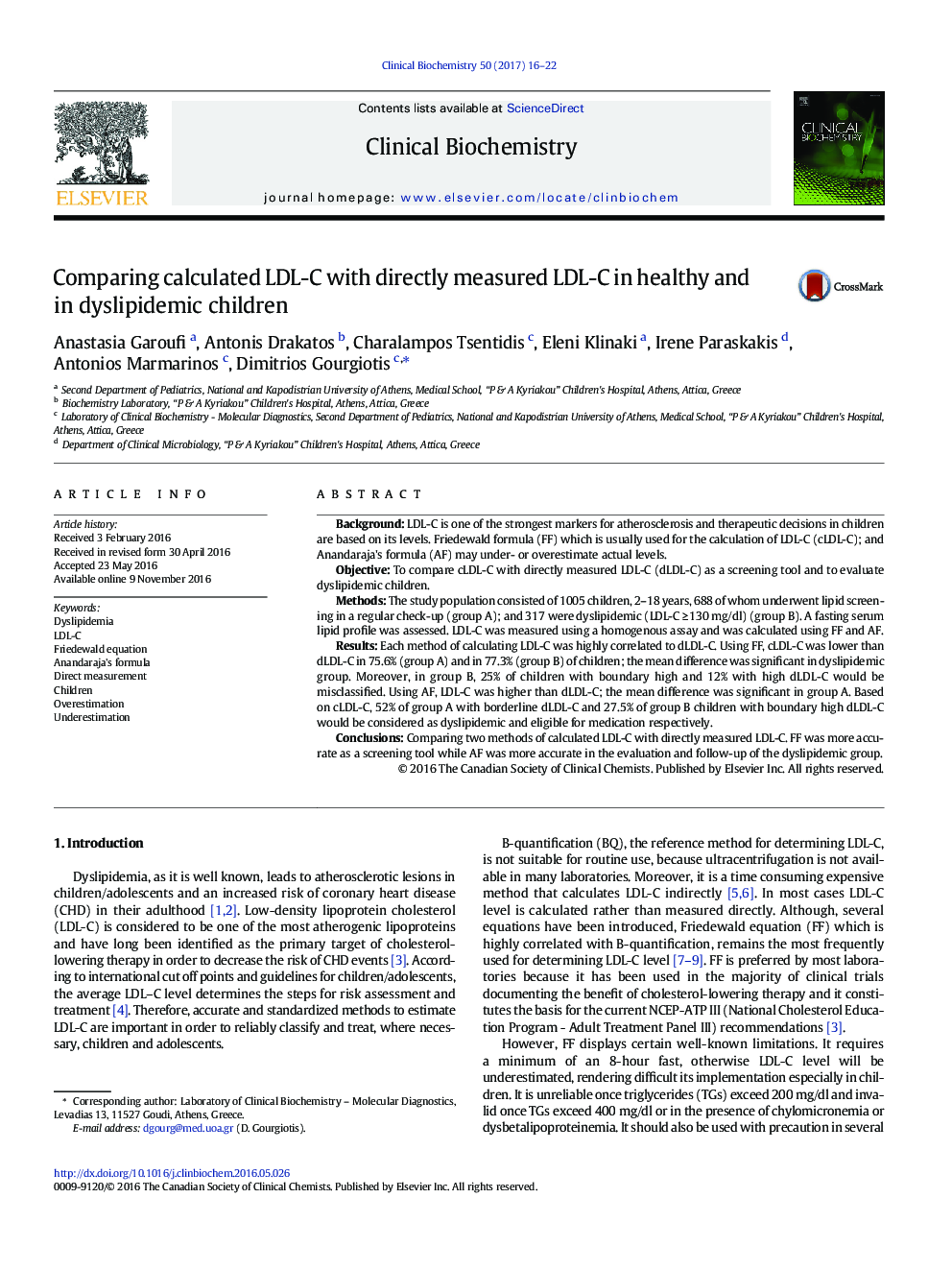| Article ID | Journal | Published Year | Pages | File Type |
|---|---|---|---|---|
| 5510097 | Clinical Biochemistry | 2017 | 7 Pages |
BackgroundLDL-C is one of the strongest markers for atherosclerosis and therapeutic decisions in children are based on its levels. Friedewald formula (FF) which is usually used for the calculation of LDL-C (cLDL-C); and Anandaraja's formula (AF) may under- or overestimate actual levels.ObjectiveTo compare cLDL-C with directly measured LDL-C (dLDL-C) as a screening tool and to evaluate dyslipidemic children.MethodsThe study population consisted of 1005 children, 2-18 years, 688 of whom underwent lipid screening in a regular check-up (group A); and 317 were dyslipidemic (LDL-C â¥Â 130 mg/dl) (group B). A fasting serum lipid profile was assessed. LDL-C was measured using a homogenous assay and was calculated using FF and AF.ResultsEach method of calculating LDL-C was highly correlated to dLDL-C. Using FF, cLDL-C was lower than dLDL-C in 75.6% (group A) and in 77.3% (group B) of children; the mean difference was significant in dyslipidemic group. Moreover, in group B, 25% of children with boundary high and 12% with high dLDL-C would be misclassified. Using AF, LDL-C was higher than dLDL-C; the mean difference was significant in group A. Based on cLDL-C, 52% of group A with borderline dLDL-C and 27.5% of group B children with boundary high dLDL-C would be considered as dyslipidemic and eligible for medication respectively.ConclusionsComparing two methods of calculated LDL-C with directly measured LDL-C. FF was more accurate as a screening tool while AF was more accurate in the evaluation and follow-up of the dyslipidemic group.
